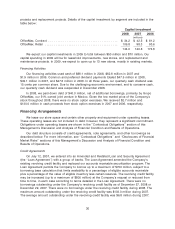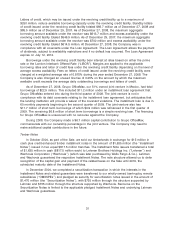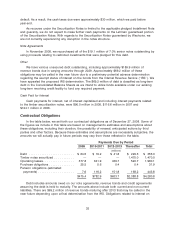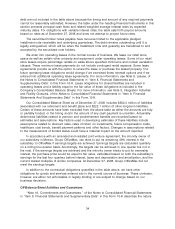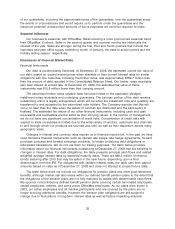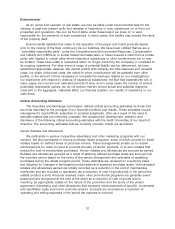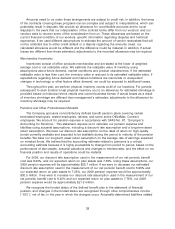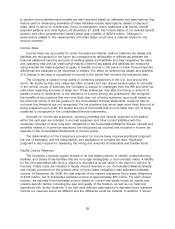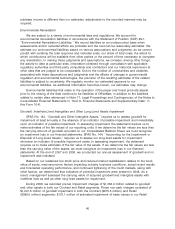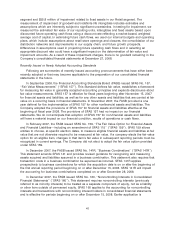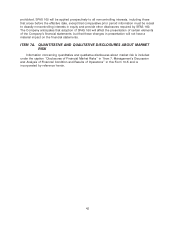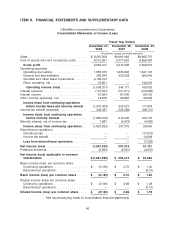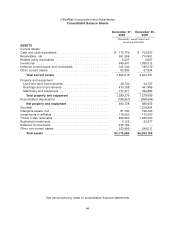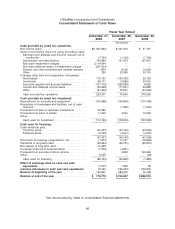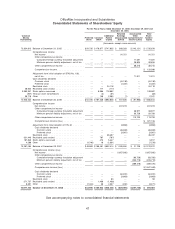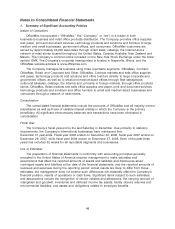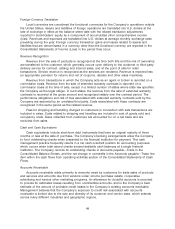OfficeMax 2008 Annual Report Download - page 44
Download and view the complete annual report
Please find page 44 of the 2008 OfficeMax annual report below. You can navigate through the pages in the report by either clicking on the pages listed below, or by using the keyword search tool below to find specific information within the annual report.sublease income is different than our estimates, adjustments to the recorded reserves may be
required.
Environmental Remediation
We are subject to a variety of environmental laws and regulations. We account for
environmental remediation liabilities in accordance with the Statement of Position (SOP) 96-1,
‘‘Environmental Remediation Liabilities.’’ We record liabilities on an undiscounted basis when
assessments and/or remedial efforts are probable and the cost can be reasonably estimated. We
estimate our environmental liabilities based on various assumptions and judgments, as we cannot
predict with certainty the total response and remedial costs, our share of total costs, the extent to
which contributions will be available from other parties or the amount of time necessary to complete
any remediation. In making these judgments and assumptions, we consider, among other things,
the activity to date at particular sites, information obtained through consultation with applicable
regulatory authorities and third-party consultants and contractors and our historical experience at
other sites that are judged to be comparable. Due to the number of uncertainties and variables
associated with these assumptions and judgments and the effects of changes in governmental
regulation and environmental technologies, the precision of the resulting estimates of the related
liabilities is subject to uncertainty. We regularly monitor our estimated exposure to our
environmental liabilities. As additional information becomes known, our estimates may change.
Environmental liabilities that relate to the operation of the paper and forest products assets
prior to the closing of the Sale continue to be liabilities of OfficeMax, in addition to the liabilities
related to certain sites referenced in Note 17, Legal Proceedings and Contingencies, of the Notes to
Consolidated Financial Statements in ‘‘Item 8. Financial Statements and Supplementary Data’’ in
this Form 10-K.
Goodwill, Indefinite-Lived Intangibles and Other Long-Lived Assets Impairment
SFAS No. 142, ‘‘Goodwill and Other Intangible Assets,’’ requires us to assess goodwill for
impairment at least annually in the absence of an indicator of possible impairment and immediately
upon an indicator of possible impairment. In assessing impairment, the statement requires us to
make estimates of the fair values of our reporting units. If we determine the fair values are less than
the carrying amount of goodwill recorded on our Consolidated Balance Sheet, we must recognize
an impairment loss in our financial statements. SFAS No. 144, ‘‘Accounting for the Impairment or
Disposal of Long-Lived Assets,’’ requires us to assess our long-lived assets for impairment
whenever an indicator of possible impairment exists. In assessing impairment, the statement
requires us to make estimates of the fair value of the assets. If we determine the fair values are less
than the carrying value of the assets, we must recognize an impairment loss in our financial
statements. At the end of 2007 and 2006, we conducted our annual assessment of goodwill and no
impairment was indicated.
Based on our sustained low stock price and reduced market capitalization relative to the book
value of equity, macroeconomic factors impacting industry business conditions, actual recent results
and forecasted operating performance, and continued tightening of the credit markets, along with
other factors, we determined that indicators of potential impairment were present in 2008. As a
result, management assessed the carrying value of acquired goodwill and intangible assets with
indefinite lives as well as other long-lived assets for impairment.
During 2008, we recorded pre-tax impairment charges of $1,364.4 million related to goodwill
and other assets in both our Contract and Retail segments. These non-cash charges consisted of
$1,201.5 million of goodwill impairment in both the Contract ($815.5 million) and Retail
($386.0 million) segments; $107.1 million of estimated impairment of trade names in our Retail
40


